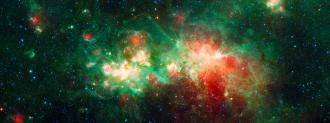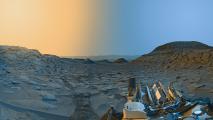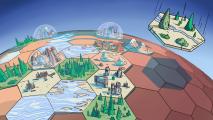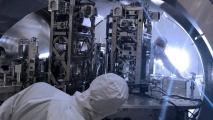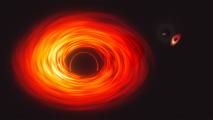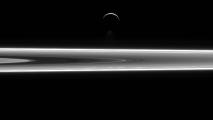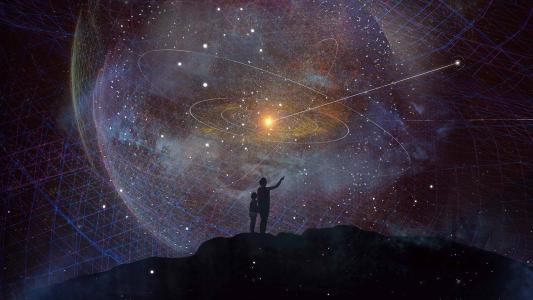A new AI system for creating cosmological simulations lets astrophysicists produce high-resolution models of large parts of the universe far more quickly than was previously possible.
Virtual universes: Cosmological simulations are computer models that scientists can use to study the evolution of our universe over time.
One of the most accurate cosmological simulations ever created, for example, started with the universe as scientists think it looked soon after the Big Bang. A computer program then forced that model to evolve over 13 billion years.
“Basically, our program…follows the universe from when it was 12 million years old and ends up at the present day,” Shy Genel, a co-author of that study, told Vice in 2014.
“We take those initial conditions and put them in our computer program that uses what we know about the laws of nature, expansion of the universe, dynamics, formation of stars and black holes, and energy and radiation that starts from black holes, and follow it from there.”
The galaxies that formed in that simulation looked a lot like the real galaxies we can study with telescope observations, suggesting that the model was accurate.
The problem: Scientists can learn a lot about the history of the universe — as well as how it might evolve in the future — from accurate cosmological simulations.
The problem is that there’s a tradeoff between resolution and size — scientists can make low-resolution simulations of large areas of the universe, or high-res simulations of smaller areas.
That’s because high-res simulations of large areas require a lot of computer processing power — it took a 16,000-core supercomputer more than a year to create our most detailed universe simulation, and a computer with a single processor would’ve needed 15,000 years.
Most of us couldn’t tell which one was ‘real’ and which one was ‘fake.’
Yin Li
How it works: Now, researchers have found a way to quickly create high-res cosmological simulations of large areas using just a single processing core.
They started by feeding an algorithm both high-res and low-res simulations of the same region of space. They then trained the AI to “upscale” low-res simulations so that they’d look like higher-res ones produced through traditional methods.
“We even did some blind tests ourselves, and most of us couldn’t tell which one was ‘real’ and which one was ‘fake,'” lead author Yin Li, an astrophysicist at the Flatiron Institute, said in a press release.
This allowed the researchers to create massive high-res universe simulations with a fraction of the time and processing power that traditional methods would require.
A computer with a single processing core would’ve needed 560 hours (more than three weeks) to churn out a high-res cosmological simulation of a universe with 134 million particles, for example, while the new algorithm could do it in just 36 minutes.
The cold water: The new technique can only produce cosmological simulations showing the effect of one force (gravity) on one type of particle (dark matter).
This is still incredibly useful — gravity is the dominant force in the universe, and an estimated 85% of the mass in it is dark matter — but the researchers want to expand their AI to account for other forces, including the ones responsible for star formation, supernovae, and more.
We’d love to hear from you! If you have a comment about this article or if you have a tip for a future Freethink story, please email us at tips@freethink.com.
